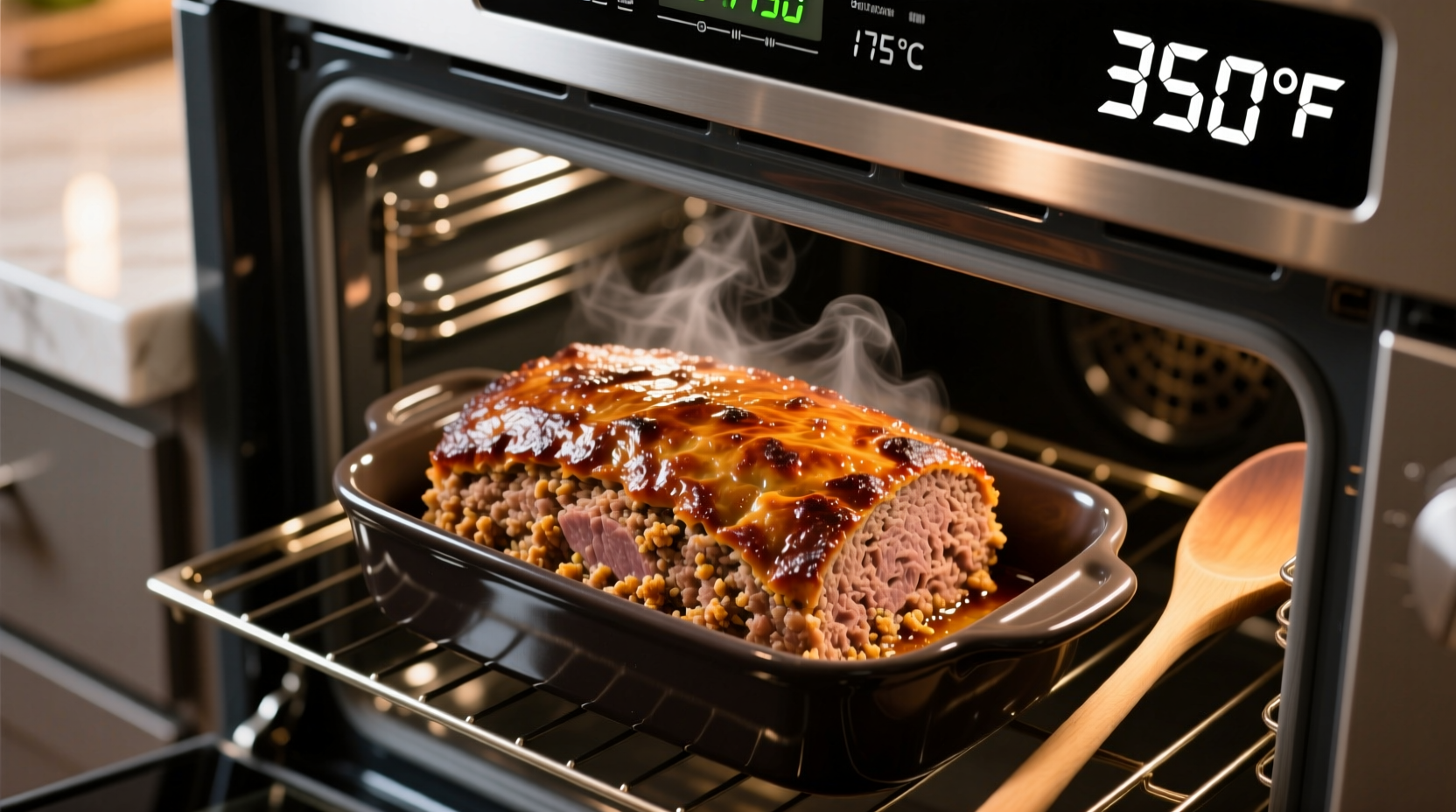Getting the temperature right for meatloaf isn't just about doneness—it's the critical factor between a juicy, flavorful centerpiece and a dry, potentially unsafe meal. As someone who's tested hundreds of meatloaf recipes across professional kitchens and home stoves, I've seen how precise temperature control transforms this classic comfort food.
The Science Behind Meatloaf Temperature
Unlike whole cuts of meat where surface cooking kills bacteria, ground meats like meatloaf require thorough internal heating because the grinding process distributes potential pathogens throughout the mixture. The 160°F (71°C) target isn't arbitrary—it's the temperature where harmful bacteria like E. coli and Salmonella are eliminated.
According to the USDA Food Safety and Inspection Service, ground meats must reach 160°F for home cooking. While commercial kitchens can use 155°F with precise time controls, home cooks should stick with 160°F as the safety standard.
| Meat Type | Safe Internal Temperature | Resting Time |
|---|---|---|
| Beef/Pork Meatloaf | 160°F (71°C) | 3-5 minutes |
| Turkey/Chicken Meatloaf | 165°F (74°C) | 3-5 minutes |
| Veal/Lamb Meatloaf | 160°F (71°C) | 3-5 minutes |
Practical Temperature Guide for Perfect Meatloaf
Oven Temperature Settings
For consistent results, preheat your oven to 350°F (177°C). This moderate temperature allows even cooking without drying the exterior before the interior reaches safe temperatures. Convection ovens may require reducing the temperature by 25°F.
Timing Guidelines Based on Size
- Standard loaf pan (9x5 inches): 50-60 minutes
- Free-form loaf (2 lbs): 45-55 minutes
- Larger loaves (3+ lbs): 65-75 minutes
These times are estimates only—your oven's calibration and meat mixture composition significantly affect cooking duration. Always verify with a thermometer rather than relying solely on time.

How to Check Temperature Correctly
Many home cooks make critical errors when checking meatloaf temperature. Follow these professional techniques:
- Use an instant-read thermometer - Digital thermometers provide accuracy within 1°F
- Insert at the thickest point - Avoid bones, fat pockets, or the pan bottom
- Check multiple spots - Meatloaf often cooks unevenly
- Wait 10 seconds for the reading to stabilize
According to research from Kansas State University's Food Safety program, inserting the thermometer near the edge of the meatloaf can yield readings up to 10°F lower than the actual center temperature, leading to undercooked results.
Troubleshooting Common Temperature Issues
When Meatloaf Cooks Too Fast
If your meatloaf reaches 160°F before developing proper crust:
- Reduce oven temperature to 325°F
- Place meatloaf on a lower oven rack
- Cover loosely with foil during first half of cooking
When Meatloaf Isn't Reaching Temperature
If after expected cooking time, your meatloaf remains below 150°F:
- Verify oven temperature with an independent oven thermometer
- Check if meat mixture contains excessive moisture
- Consider if loaf pan material affects heat conduction (glass vs. metal)
Special Considerations for Different Meatloaves
While 160°F works for traditional beef or pork meatloaf, variations require adjustments:
- Turkey or chicken meatloaf needs 165°F (74°C) due to salmonella risks
- Meatloaf with cheese fillings may require 5-10 minutes longer for heat penetration
- Glazed meatloaf should have glaze applied during last 15-20 minutes to prevent burning
The Centers for Disease Control and Prevention emphasizes that poultry-based meatloaves require higher temperatures because poultry carries different bacterial risks than red meats.
Resting: The Critical Final Step
Never skip the resting period after reaching 160°F. Let your meatloaf rest for 3-5 minutes before slicing. This allows:
- Temperature equalization throughout the loaf
- Protein fibers to relax, retaining moisture
- Carryover cooking to complete the process
During resting, the internal temperature typically rises 3-5°F, ensuring complete pathogen elimination while maintaining optimal texture.
FAQ: Meatloaf Temperature Questions
Can I cook meatloaf to 150°F and let carryover heat reach 160°F?
While professional kitchens sometimes use this technique with precise timing, home cooks should not rely on carryover cooking alone. The USDA recommends cooking ground meats to 160°F directly for safety, as home ovens and resting conditions vary too much for reliable carryover heating.
Why does my meatloaf thermometer show different temperatures in different spots?
Meatloaf often cooks unevenly due to variations in density, fat distribution, and proximity to the pan. Always take multiple readings from different areas, focusing on the thickest sections. The lowest reading determines doneness—if any spot hasn't reached 160°F, continue cooking.
Does a meatloaf temperature chart differ for convection ovens?
Yes, convection ovens typically cook 25°F hotter than conventional ovens. When using convection, reduce the oven temperature to 325°F but maintain the same target internal temperature of 160°F. Convection may reduce total cooking time by 15-25%, so start checking temperature earlier.
How long should I cook meatloaf at 375°F instead of 350°F?
At 375°F, reduce cooking time by approximately 10-15% compared to 350°F recipes. However, higher temperatures increase the risk of dry exterior before interior reaches 160°F. For consistent results, 350°F remains the recommended oven temperature, with internal temperature as the true doneness indicator.
Can I use a slow cooker for meatloaf and what temperature should it reach?
Yes, slow cookers work well for meatloaf but require longer cooking times. Set to high for 3-4 hours or low for 6-8 hours. Regardless of method, the internal temperature must still reach 160°F. Check with a thermometer in the final hour of cooking, as slow cookers may not generate enough heat for proper browning.











 浙公网安备
33010002000092号
浙公网安备
33010002000092号 浙B2-20120091-4
浙B2-20120091-4